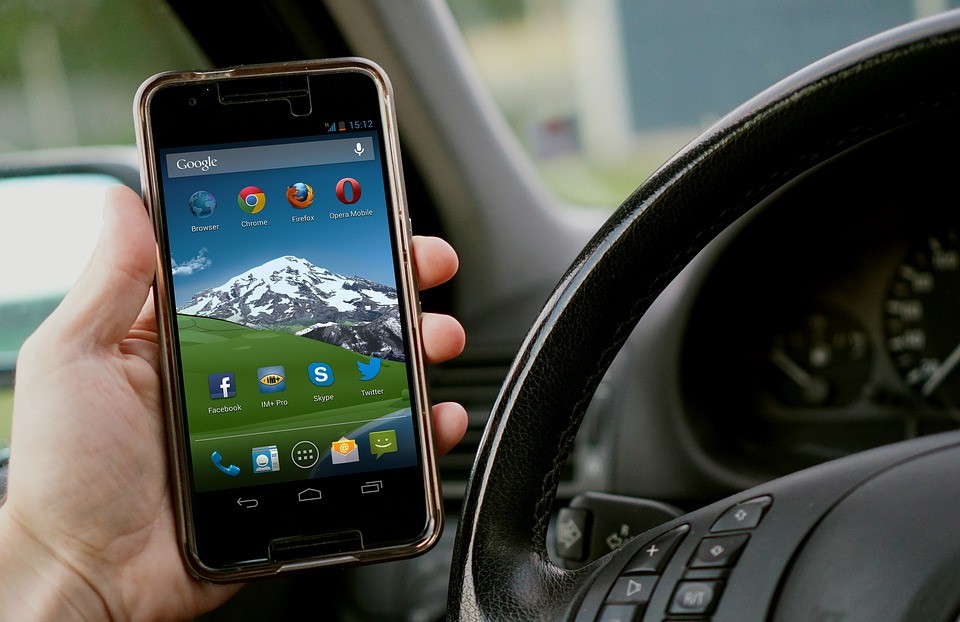Posted on August 13, 2016 by LocAdsAdmin No comments

According to a study from Microsoft, people lose their concentration after only 8 seconds. That’s shorter than the attention span of a goldfish! How did we get to this point? We can thank our increasing dependence on mobile phones and the constant pressure to multi-task. Between 140 character tweets and 10 second Snapchat videos, how do you make sure you deliver a highly relevant message to consumers at exactly the right time? Are you still with us? Try to pay attention a little longer – we’re about to tell you.
Location, Location, Location
Tapping into the location of your users, or geo-targeting as it’s called in the advertising industry, can be one of the most effective ways large and small brands can get the most out of their advertising spend. Geo-targeting gives brands the opportunity to find the most relevant potential customers, at a time when they are in the most relevant place. By delivering a personalized campaign that makes a location-based offer, your brand can drive sales easily and efficiently.
Mobile Marketing and Geo-targeted Advertising
You need to be where your customers (and your competitors!) are – and that’s on mobile devices. In 2015, location-targeted mobile ad spend totaled $8.4 billion and, according to the IAB, that number will grow to $11.3 billion in 2016. Consumers are known to make purchases based on in-the-moment decisions, or as Google calls them, micro-moments. And, while many consumers begin researching products online, they are often driven to a store to complete purchases. A Local Search Study conducted by comScore found that following a mobile search, 73% of purchases happened in a physical store, and another study found that 82% of smartphone users consult their phones on purchases they are about to make in-store.
Geo-fencing vs Geo-targeting: Use the Right Approach
While mobile devices give consumers tons of information at their fingertips, for advertisers, these devices are like mini location trackers, using GPS and Bluetooth technology to identify the location of the person and giving local businesses an opportunity to deliver ads to nearby potential customers. Location data is sent in real-time which means advertisers can target consumers at very specific moments through geo-fencing and geo-targeting.
Geo-fencing is like drawing a circle on a map and showing your ad to anyone who enters this circle, regardless of their individual interests. Your ads will be shown to anyone surfing the internet that has entered inside your fence and will stop being shown once the user has left the designated area. Let’s say you have a restaurant a few blocks from a shopping mall. You could target people who are leaving the shopping mall with a relevant ad alerting them to your location and even offering them a special deal. Geo-fencing is most effective when you create a hyper-local fence, generally within a 5-10 minute walk from your location. This allows advertisers to spend money on campaigns when consumers are most likely to walk into the restaurant while not wasting money delivering ads to people who are more than a few minutes’ walk away. You can also implement “competitor conquesting” campaigns in which you create a fence around your competitors’ locations and try to bring consumers to your business with special offers.
There are several different types of geo-fencing campaigns you can implement. The most popular technique is using display ads which can be shown while someone is searching online. If your target consumer is likely to be on scrolling through their Twitter or Facebook feed, you can leverage this by using social media advertising. Although slightly less common, SMS geo-fencing has been found to be highly effective as it doesn’t rely on the consumer being needing to be online.
While geo-fencing targets people who are physically in a specific location, geo-targeting methods allow you to target users within a larger area like a zip code, city or state. One of the best ways to implement geo-targeting ads is to use location-based keywords in paid search campaigns. If people are searching for Mexican restaurants in San Diego, they are probably willing to go more than a few minutes from home as it is a city wide search rather than narrowing it down to a specific neighborhood or street.
Geo-targeting is also a good option if you target your ads by search history. Imagine that you run a hotel in San Diego. Your potential customers are not often going to walk in off the street, but they may be online searching for various attractions in the city. You would need to use geo-targeting methods because the user is not in the actual location but has a clear intent to be there sometime soon. If your business has a specific demographic trait that you can identify geo-targeting can work well. People with special interests are often willing to travel further to find a product or business that suits their needs.
Location-based advertising has proven to be highly effective for many local businesses. With an ever-growing number of mobile consumers, geography has become one of the top ways to drive sales, coupon redemption and increase conversions. Take advantage of today’s technology and be sure to deliver relevant, creative campaigns that will bring in new and repeat consumers.



Comments